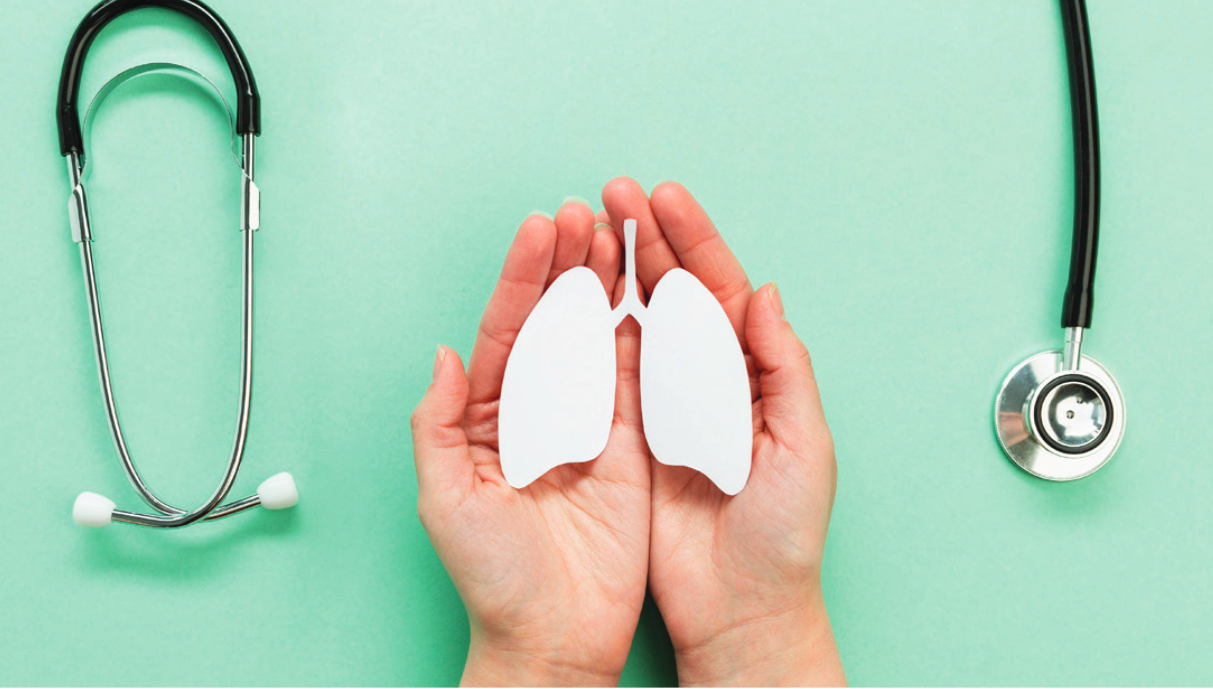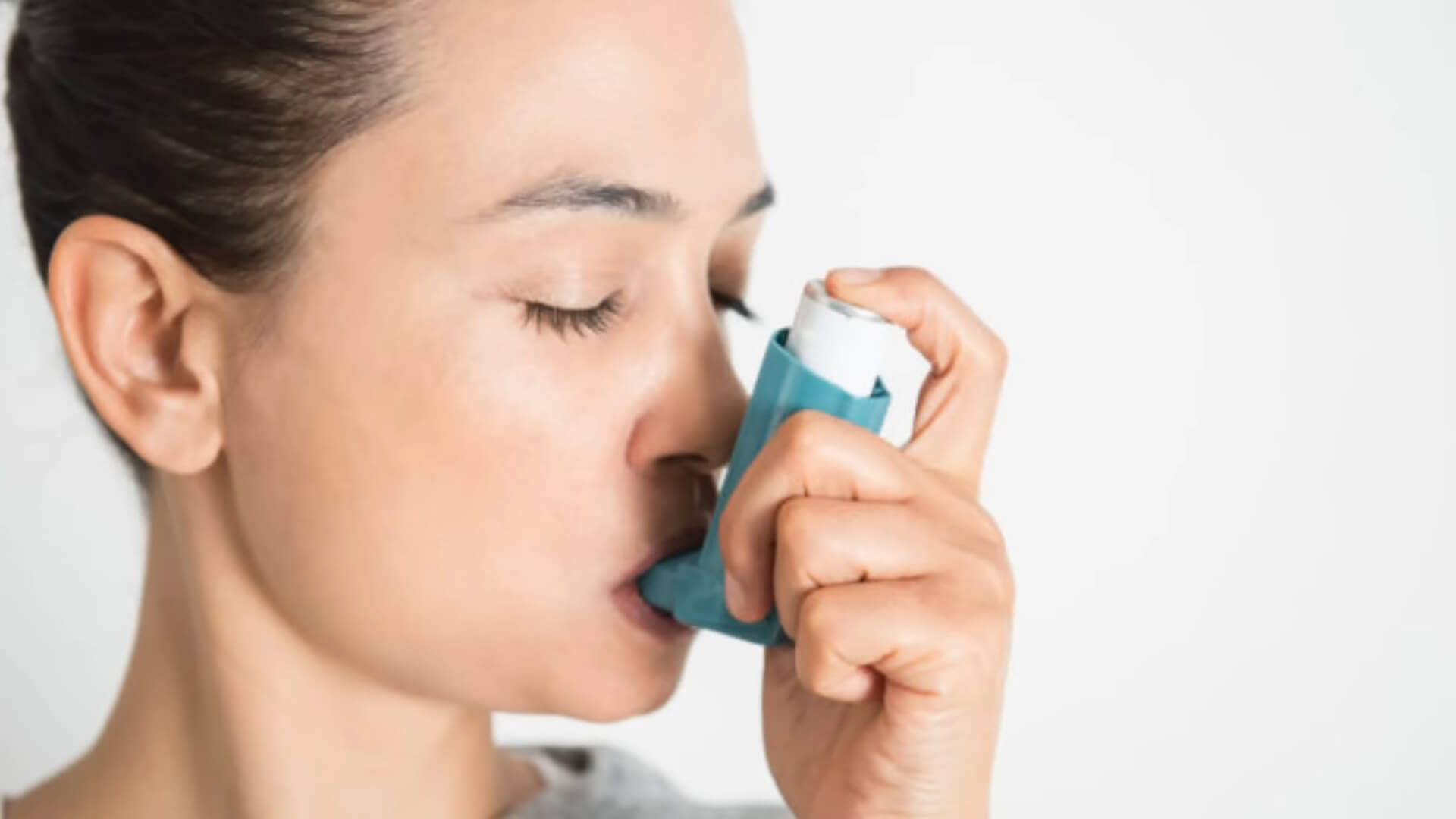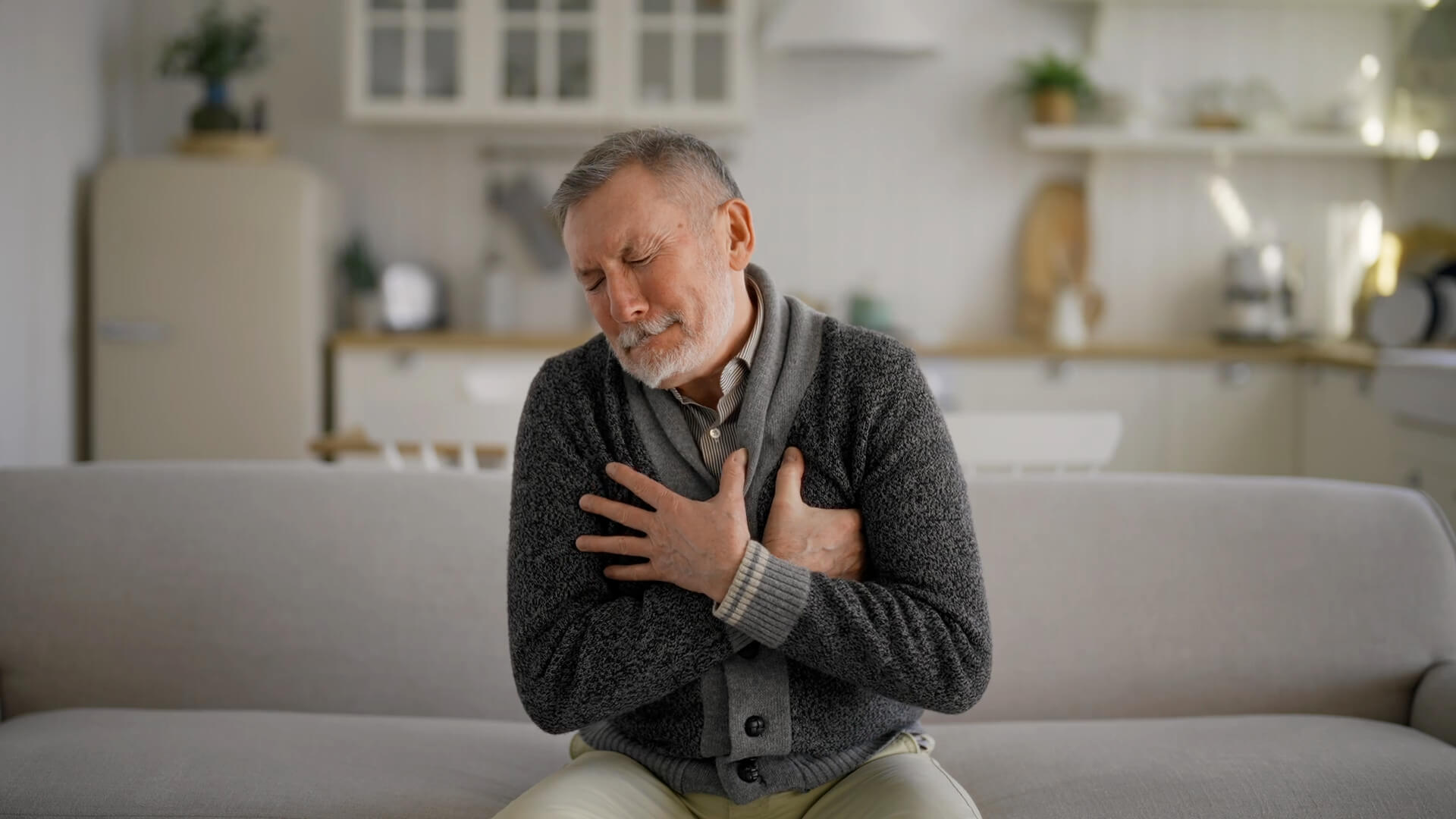COPD impacts millions of lives worldwide, but understanding what each stage means can help navigate its challenges better. Knowing the life expectancy and symptoms associated with each of the four stages empowers those affected to make informed decisions about treatment and lifestyle.
In this guide, we’ll break down the key differences between stages.
| Stage | Severity | Main Symptoms | Lung Function (FEV1) |
|---|---|---|---|
| Stage I | Mild | Occasional shortness of breath, mild cough | ≥ 80% |
| Stage II | Moderate | Increased breathlessness, daily cough | 50-79% |
| Stage III | Severe | Frequent flare-ups, reduced activity levels | 30-49% |
| Stage IV | Very Severe | Severe limitations, low oxygen levels | < 30% |
Table of Contents
ToggleStage 1 COPD
Stage 1 COPD is often the least noticeable and can go undetected due to mild symptoms. Most people in this stage experience a persistent cough, usually with mucus, and occasional shortness of breath during physical activity.
Lung function at this point is around 80% or more of the expected capacity. The early signs are often misinterpreted as minor issues like a seasonal cough or aging-related shortness of breath.
- Diagnosis: Confirmed through spirometry, measuring lung function (FEV1 ≥ 80%).
- Symptoms: Mild breathlessness, chronic cough, and frequent throat clearing. Symptoms are mostly noticed during exercise or strenuous activities.
- Impact: People often remain highly functional, though occasional flare-ups might occur. The disease is not usually life-limiting at this point but can become more severe if left untreated.
Treatment and Management
Early intervention is critical. Treatment typically involves short-acting bronchodilators and pulmonary rehabilitation programs, including personalized exercise routines and breathing techniques.
Vaccinations, especially flu shots, are highly recommended to prevent respiratory infections that could exacerbate the condition. Quitting smoking and reducing exposure to pollutants drastically improve long-term outcomes.
Additional Stats
- Progression: Without management, 25-30% of individuals progress to Stage 2 within five years.
- Mortality Risk: Life expectancy remains close to normal for many patients if proper interventions begin at this stage.
Stage 2 COPD – Moderate Disease Progression
Stage 2 COPD is when the disease becomes more noticeable and begins to interfere with daily life. At this stage, lung function typically falls between 50% and 79% of what’s considered normal (FEV1).
Symptoms like persistent cough, increased mucus production, and shortness of breath become more frequent, often causing individuals to seek medical attention. This stage is where most people get diagnosed because symptoms start affecting their ability to perform routine tasks, such as climbing stairs or walking long distances.
- Breathlessness: More pronounced during physical activity, like walking or mild exertion.
- Persistent Cough: Usually with significant mucus production.
- Frequent Exacerbations: Flare-ups that last several days and might require changes in treatment or hospitalization.
- Spirometry: Diagnostic tests show lung function between 50% and 79%, confirming moderate COPD.
Treatment and Management
The focus at this stage is on managing symptoms, preventing flare-ups, and slowing disease progression. Treatment typically involves:
- Long-acting Bronchodilators: Medications like salmeterol and tiotropium help keep airways open for a longer duration.
- Inhaled Corticosteroids: Often combined with bronchodilators to reduce airway inflammation.
- Pulmonary Rehabilitation: Exercise programs, breathing techniques, and nutritional guidance are crucial in maintaining activity levels and improving quality of life.
- Vaccinations: Flu and pneumonia shots are strongly recommended to avoid respiratory infections, which can lead to severe exacerbations.
Quitting smoking remains a priority if not already done in Stage 1. Additionally, avoiding environmental pollutants and maintaining a healthy lifestyle play vital roles. Many individuals can still maintain a relatively active lifestyle if they adhere to the recommended treatments. If you are struggling to stop smoking, proper addiction treatment is also necessary.
However, without proper management, life expectancy begins to shorten more significantly as the disease progresses to later stages.
Additional Insights
- Life Expectancy Impact: On average, life expectancy decreases by approximately 2-5 years for those at Stage 2 compared to healthy individuals, depending on how well the disease is managed.
- Progression Risk: Approximately 40% of patients at this stage progress to Stage 3 within five years if lifestyle changes and treatments are not rigorously followed.
Stage 3 COPD – Severe Disease Progression
Stage 3 COPD is where symptoms become severe, significantly impacting daily life. Lung function drops to 30-49% of normal capacity (FEV1), resulting in frequent breathlessness and difficulty performing simple tasks like dressing or walking short distances.
At this stage, flare-ups or exacerbations become more common, often requiring medical intervention or hospitalization.
- Increased Shortness of Breath: Even routine activities, like walking or light chores, can leave you gasping for air.
- Frequent Exacerbations: Flare-ups become more severe, often triggered by respiratory infections or environmental factors.
- Coughing and Mucus Production: The cough becomes more persistent, with thicker mucus.
- Physical Changes: Swelling in the legs, ankles, or feet, bluish lips, and fingertips indicate reduced oxygen levels. Fatigue becomes more prominent due to the energy required to breathe.
Treatment and Management
- Bronchodilators and Inhaled Steroids: Long-acting bronchodilators (LABAs and LAMAs) combined with inhaled corticosteroids help control symptoms and prevent flare-ups.
- Oxygen Therapy: Many patients begin using supplemental oxygen during activities or even continuously.
- Pulmonary Rehabilitation: Continued rehab programs offer personalized exercise routines, nutritional advice, and breathing strategies to enhance quality of life.
- Medications: Phosphodiesterase-4 inhibitors like roflumilast reduce airway inflammation and mucus production, helping prevent exacerbations.
Quitting smoking remains critical if not already done. Maintaining a healthy diet and staying active within your limits are essential, despite the fatigue. Regular vaccinations (flu, pneumonia) are crucial to avoid respiratory infections that could lead to further complications. Stage 3 COPD significantly shortens life expectancy if unmanaged, but proactive treatment can still preserve daily functioning and quality of life.
Additional Insights
- Life Expectancy: The average life expectancy drops by about 5-8 years compared to healthy individuals, heavily depending on smoking status and overall health.
- Hospitalization Risk: Frequent exacerbations at this stage often lead to hospital stays, making close monitoring and adherence to treatment plans vital.
Stage 4 COPD – Very Severe Disease Progression
Stage 4 COPD, also known as end-stage or very severe COPD, is marked by significant lung damage and a substantial decline in quality of life. Lung function drops below 30%, leaving individuals struggling with basic tasks due to constant breathlessness. Even minimal activities like sitting or talking can become exhausting.
- Extreme Breathlessness: Often requiring oxygen therapy, even during rest.
- Frequent Exacerbations: Severe flare-ups can be life-threatening, frequently resulting in hospitalizations.
- Complications: Symptoms like bluish skin, swollen extremities, and chest pain become common.
Treatment
- Oxygen Therapy: Often continuous, delivered through nasal cannulas or masks.
- Medications: Inhaled steroids, bronchodilators, and sometimes opiates are used to manage severe symptoms.
- Surgical Options: Lung volume reduction surgery or even lung transplants may be considered.
Life expectancy becomes heavily impacted at this stage, with most patients living only a few years without significant intervention. Palliative care, including psychological support and hospice options, becomes a crucial consideration. Quitting smoking, eating nutritious foods, and maintaining as much physical activity as possible can still make a difference.
How COPD Stages Are Determined?
Doctors classify COPD stages using the GOLD system, which evaluates the disease based on lung function and symptom severity. The primary measure is forced expiratory volume (FEV1), which assesses how much air you can exhale forcefully in one second.
The GOLD system categorizes COPD into four stages, from mild to very severe, each requiring different levels of care and treatment. Accurate staging helps doctors decide the most effective treatment plan, while also providing insight into disease progression and life expectancy.
Spirometry
Spirometry is the primary test used to diagnose and stage COPD. It measures the amount of air you can forcefully exhale in one second (FEV1) and compares it to a healthy standard. The test is quick, non-invasive, and provides critical data:
- FEV1: Measures the volume of air exhaled in the first second, reflecting lung function.
- FEV1/FVC Ratio: Used to confirm airflow obstruction, a hallmark of COPD. A ratio below 0.7 indicates COPD.
Spirometry is often repeated over time to monitor disease progression. Early detection through this test can slow down the worsening of symptoms by enabling timely intervention.
GOLD System Stages
The GOLD (Global Initiative for Chronic Obstructive Lung Disease) system categorizes COPD stages as follows:
- Stage 1 (Mild): FEV1 ≥ 80% of predicted value. Symptoms may be minimal, often just a persistent cough.
- Stage 2 (Moderate): FEV1 between 50-79%. Symptoms worsen with noticeable shortness of breath during exertion.
- Stage 3 (Severe): FEV1 between 30-49%. Breathlessness is frequent, and flare-ups become more common.
- Stage 4 (Very Severe): FEV1 < 30% or < 50% with chronic respiratory failure. At this stage, quality of life is severely impacted, and long-term oxygen therapy might be necessary.
Managing Flare-Ups at Every Stage
Managing COPD flare-ups, also known as exacerbations, is crucial at every stage of the disease. Flare-ups are sudden periods when symptoms worsen and can last from a few days to several weeks. They are often triggered by respiratory infections, pollution, or other environmental factors. Frequent exacerbations can accelerate disease progression, making it vital to minimize and manage them.
Recognizing Flare-Ups
Common signs of a flare-up include increased coughing, shortness of breath, changes in mucus (color or thickness), fatigue, and difficulty sleeping. Early recognition is key to preventing serious complications and avoiding hospital visits. Developing a personalized COPD action plan with your healthcare provider helps identify early signs and take prompt action.
Prevention
- Quit Smoking: The number one preventive measure for reducing flare-ups and slowing disease progression.
- Avoid Triggers: Triggers include smoke, strong odors, dust, and cold weather. Identify your triggers and adjust your environment accordingly.
- Stay Vaccinated: Annual flu shots and pneumonia vaccines are essential since respiratory infections are major causes of exacerbations.
- Use Medication Properly: Long-acting bronchodilators, corticosteroids, and rescue inhalers are vital in managing symptoms and preventing flare-ups.
- Stay Active: Regular exercise, tailored to your ability, helps keep muscles strong and improves lung function, reducing the impact of flare-ups.
COPD Action Plan
A COPD action plan divides your symptoms into zones:
- Green Zone: Stable, day-to-day symptoms.
- Yellow Zone: Warning signs indicating a flare-up, like increased breathlessness or changes in mucus. This is when you might need to increase medication or consult your doctor.
- Red Zone: Severe symptoms requiring urgent medical attention, such as extreme breathlessness or confusion.
FAQs
What is the life expectancy with COPD?
Life expectancy with COPD depends on the stage at diagnosis, overall health, and lifestyle factors like smoking. Generally, in the early stages, life expectancy may be minimally affected, but in stages 3 and 4, it can be reduced by several years. On average, patients diagnosed at stage 4 may have a life expectancy of 1-3 years without aggressive management.
Can COPD be cured?
COPD cannot be cured, but its progression can be slowed down, and symptoms can be managed with proper treatment, lifestyle changes, and medications. The focus is on improving quality of life and preventing exacerbations.
Does everyone with COPD need oxygen?
Not all COPD patients require oxygen. Oxygen therapy is typically prescribed when blood oxygen levels fall below normal, usually in stage 4 or for those with chronic respiratory failure. Regular monitoring helps determine if and when oxygen is needed.
Can I exercise with COPD?
Yes, regular exercise is encouraged for COPD patients as it strengthens muscles, improves overall endurance, and helps the body use oxygen more efficiently. Exercise programs should be tailored to each patient’s ability and overseen by healthcare professionals.
What foods should be avoided with COPD?
COPD patients should avoid foods that cause bloating or gas, like carbonated drinks and fried foods, as they can make breathing more difficult. High-salt foods should also be limited to reduce fluid retention, which can worsen symptoms.
Conclusion
COPD is a serious condition, but knowing the stages and what they mean can help you face it more effectively. Taking control of your treatment, monitoring your symptoms closely, and adjusting your lifestyle as needed are essential steps.
Each stage has its own challenges, but with the right approach and support, you can still lead a fulfilling life while managing this condition.

















